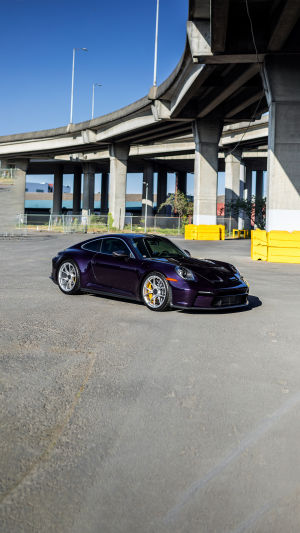From the inception of cinema, the automobile has consistently played a significant role, which may seem commonplace, but has its own historical roots.
Towards the end of the 19th century, gasoline-powered cars and motion picture cameras made their debut, setting in motion the rapid growth of both industrial systems.
Movies serve as mirrors of real life, and as feature films gained popularity, cars slowly evolved into the everyday mode of transportation for people. Consequently, car culture within movies also began to take shape.
Today, automobiles have become one of the staple props in both film and television productions, undertaking increasingly vital roles.
This is especially evident in unique genre films where cars serve not only as the protagonist's mode of transport but also as symbols conveying the film's central themes. One of the genres closely linked to cars is the road movie.
Road movies, a cinematic form rooted in travel literature, have gained favor among audiences due to their rich and captivating adventure narratives and the breathtaking landscapes showcased along their journeys.
Despite the diversity of road movies and the various modes of transportation they employ, the genre's development owes much to the automobile industry's growth and the reverence for cars within teenage pop culture.
Widely regarded as the origins of the road movie, "Bonnie and Clyde," released in 1967, and "Easy Rider," in 1969, hold a special place in this cinematic theme.
"Bonnie and Clyde" prominently features Bonnie and Clyde, who traverse the country in various vintage cars, portraying a famous criminal couple from the 1930s Great Depression era.
Their tumultuous journey, marked by frequent car changes to elude the police, presents the audience with a grand display of classic automobiles. The cars, filled with color and retro style, deeply imprint on the viewer's memory.
The continuously changing cars symbolize the protagonists' transient, carefree lives, aligning with the counterculture of the 1950s and 1960s, particularly the hippie movement.
This influence naturally led to the success of road movies such as "Bonnie and Clyde" and "Easy Rider."
In contrast, "Thelma and Louise," released in 1991, offers a more somber atmosphere. Louise and Thelma, best friends tired of their mundane lives, embark on a fateful road trip. After a harrowing incident, they find themselves on the run, their lives forever altered.
The film depicts the transformative power of the journey as the two women encounter unfamiliar landscapes, gaining newfound self-awareness.
Their escapade in a green sports car on picturesque country roads exudes an aura of freedom and romance, captivating the audience beyond the screen.
Notably, the story doesn't grant the protagonists a successful escape.
Much like the self-exiled protagonists, the cars in "Thelma and Louise" also hold vital roles, embodying the spirit of fearless freedom. Moreover, in road movies, cars assume added significance as they adapt to shifting themes.
In "A Perfect World," which centers around escape, Butch, a fugitive, and young hostage Philip form a remarkable father-son-like bond during their journey.
The three cars they use not only serve as getaway vehicles but also symbolize the strong connection they develop.
As Butch races along, young Philip, raised in a single-parent household, experiences unparalleled excitement and joy, finally understanding the role of a father. This makes their eventual separation in the real world all the more poignant.
From an aesthetic standpoint, the vehicles driven by the protagonists perfectly complement the film's themes and exude a cool and appealing aura.





